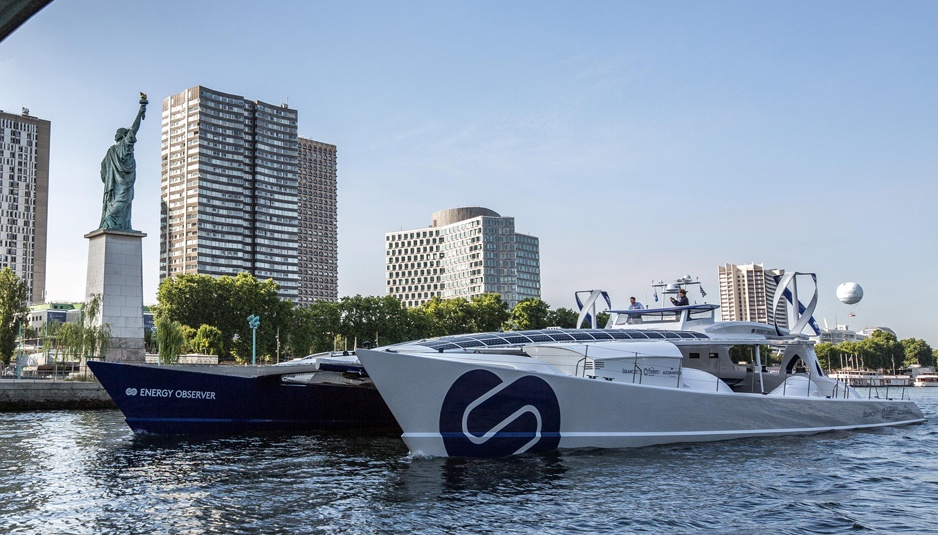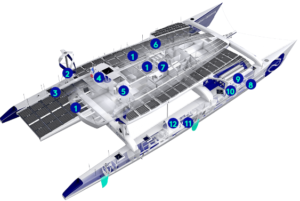Energy Observer: How does it work?

energy-observer.org
Article by Francesca Marasciuolo
In 1994 (23 years ago) the “Enza New England” race boat won the Jule Verne Cup, travelling alla round the world for 74 days. Today, the new eco-friendly boat Energy Observer wants to succeed in doing the same thing, visiting 50 countries and 101 ports. It will allow to travel without producing emissions, only using solar, wind and seawater energy .
Innovation. Energy Observer is energy-indipendent because it has a system of production and storage of hydrogen: this one represents the future of energy, because it doesn’t produce drosses (if it oxidizes, it produces water), and it has a high energy density ossidare (it is possible to travel 100 km using 1 kg of hydrogen!).

With its 31 m of length and 12.80 m of width, the sail boat consists of:
- 130 m2 of solar panels combining 3 different technologies: conformable, bifacial, and with a non-slip coating;
- 2 vertical axis wind turbin , for power production 2×1 kW;
- A seawater desalination system produced by reverse osmosis with two story (105 L/h);
- Development of a routing software to optimize the route plan by incorporating the parameters related to sailing conditions (waves, wind, currents) but also to optimize the production of energy on board (sunshine, cloud cover, hydrogen levels, remaining distance);
- On board and remote real-time tracking of the performance, management, and optimization of the energy flows;
- Tanks for the compression of hydrogen (from 30 to 350 bars);
- Automated kite intended to increase the speed of the vessel and to reduce its energy costs, but also to convert electric motors into hydrogenerators;
- System intended to do the electrolysis to break down the H2O molecule into oxygen O2 and dihydrogen H2. The oxygen is released into the atmosphere, while the hydrogen is stored in gaseous form to conserve the excess of energy;
- Hydrogen tanks for long-term energy storage ;
- Fuel Cell to generate electricity from the stored hydrogen;
- Li-ion batteries for short-term storage and power demands management for motorisation, electrolysis, and compression;
- 2 electric motors with very high efficiency rates (97%), reversibile in hydrogenerators.
The project has been created by Cea-Liten Research Institute, in collaboration with UNESCO and the Nicolas Hulot Fondation. Energy Observer, during its long trip, will visit cities and areas that have already started the transition towards the use of renewable energy.
